Translate?
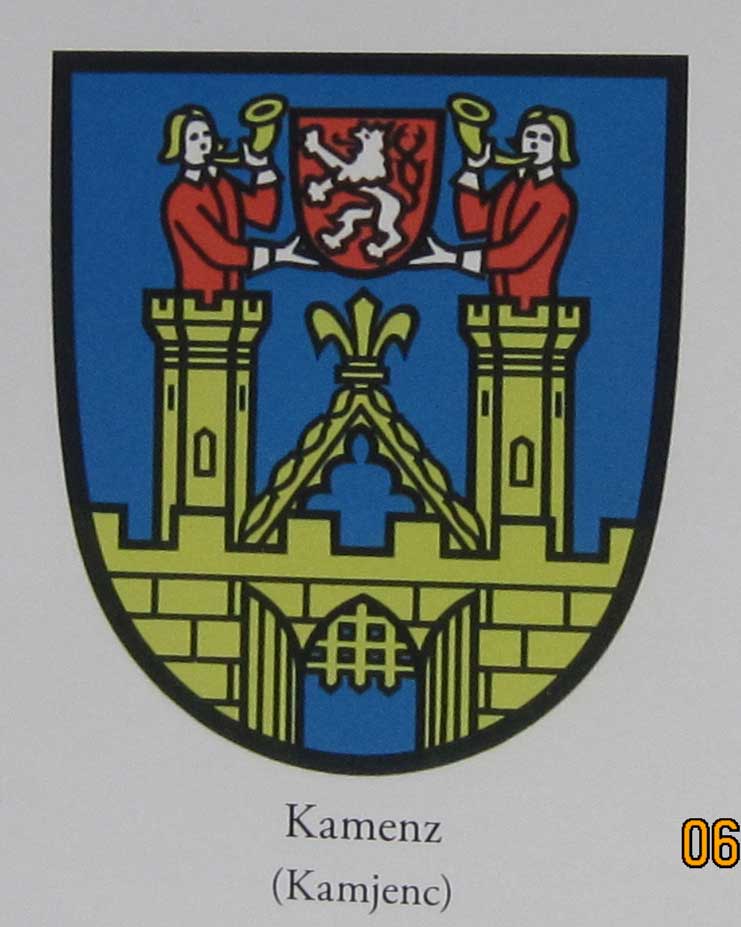
Kamenz: The Remus Family Hometown
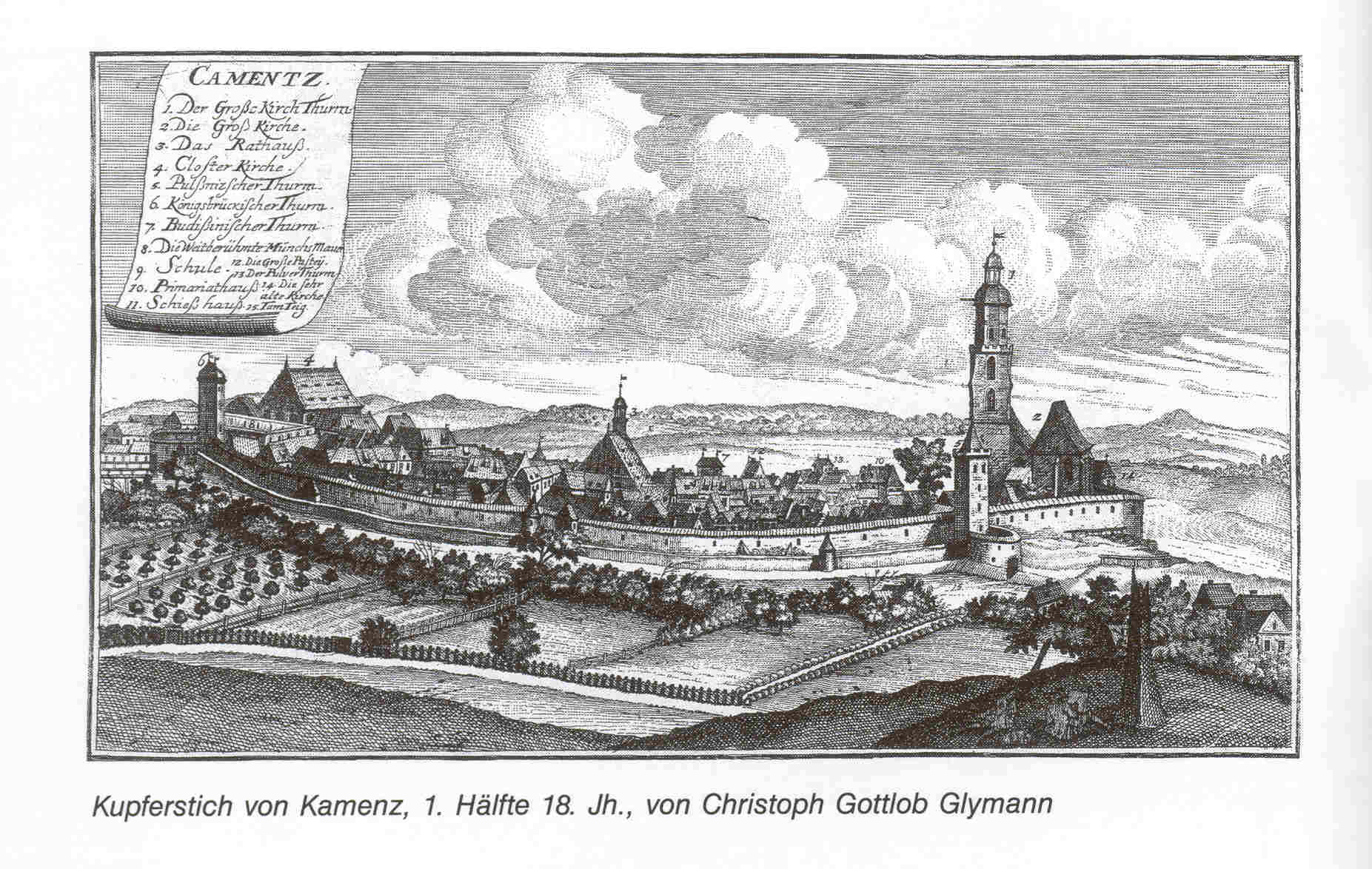
Kamenz is the likely hometown of the Remus family. Around
1700 we find Martin, Johan, Christian, and Michael Remus being born near Kamenz. In 1717 Remus family members with the same first
names were on the muster role in Braunsfelde,
Neumark.
Remus family members with the same names are in found living in Kreis Schlochau,
West Prussia around 1730. Kamenz is also most likely the hometown for the Remus
family of Grossenhain. Interestingly, one burger in Kamenz was
Johan Caspar Remus - the same name as one of my early
ancestors. Johan Caspar Remus was a cook in Kamenz. Perhaps he is the Johan Caspar
who was an innkeeper in Schmirdau, West Prussia
as cooking would have been a very useful skill. Another Burger was miller Johan
Georg Remus was a Burger in Kamenz
in 1707 and is recorded as marrying Maria Magdalena Melzer
in 1708. His father Georg Remus was also a Burger.
Johan George and his wife later migrate to Bergelau, Kreis Schlochau,
West Prussia where Johan George
was the village miller. Their sons also became millers.
Also we have very
good reasons for this migration. From 1702 till 1704 the Army of Saxony
recruited people throughout Saxony (including Kamenz)
for the Great Northern War that was being fought in Neumark and West Prussia. Then in
1717, the Army of Saxony was demobilized leaving many soldiers in northern Poland.
Augustus the Strong, King of Saxony and Poland, encouraged such migration to
stabilize those lands and provided some support in the form of small land
grants (like Michael Remus of Pollnitz,
Kreis Schlochau, West Prussia) to facilitate that end. Click here to see a listing
of some of the Saxon Army archives in Dresden. Also, West
Prussia had been decimated in the Great Northern War. This led
the Polish Nobility to invite Germans to repopulate the farmland. As is shown
in the West Prussia
section, the Remus family negotiated contracts with up-front payments with the
Polish Nobility; as burgers, the Remus family had access to money for those
contracts. The Remus family also was a good choice since they lived in
communities with the Wends and, assuming they spoke with their neighbors, they
could communicate in Polish since Wendish and Polish
are mutually understandable. Another factor that encouraged them to migrate was
that the town of Kamenz
burned down on 11 June 1707 except for the Churches and Rathaus.
The town of Kamenz
developed in the 12th century as a fortified town along a major
trade route. The first church dates from before 1225. In this area, the economy
had improved from the year 1000 to 1300. By 1300, the population had exceeded
the land's capacity and famine was a regular event. By 1350, the Black Plague
entered and killed off about 60% of the population. About 1450, with the new
lower level of population, the living conditions improved. Click here
for more on the Black Plague. And click here for the
living conditions in 1500 when the
Remus/Remitz family story begins. Since prior to
1506, the town economy was largely based on cloth making, especially felt
production. The key location for this business was in modern Tuchmacherteich which is in Wiesa.
See Wiesa
for more details.
Most of the Remus
family lived in the village
of Wiesa just
outside Kamenz; the family history in Wiesa is documented from the year 1491 to 2007. They also
lived in the city of Kamenz and occasionally lived and
worked in Biehla. The 1491 date is that when the
first Remus family member became a burger in the town of Kamenz (even
though resident in Wiesa). To see a
spreadsheet with part of the data on the Remus family of Kamenz
by clicking here (there are still many more records to
extract). The spreadsheet includes many Remus family members who were burgers
in Kamenz and are listed in the "Kamenzer Burgerbuch 1570 to
1744" by Dr Gerhard Stephan, published in 1929 and the ones listed in
"Kamenzer Neuburger berzeichnis 1483-1539" by Friedrich Rahles. Added to this are the 1600 to 1700
church records for Kamenz. One might note the
variations in the Remus family name (including Remitz)
until the name stabilized much later.
You can see a
modern map of the area below and can click here to go to Wiesa or click here to go to the village of Bischheim which had a Remus family in the late 1500's which was
likely part of the Kamenz Remus family. Biehla is off the map and north of the city; click here to go to Biehla.
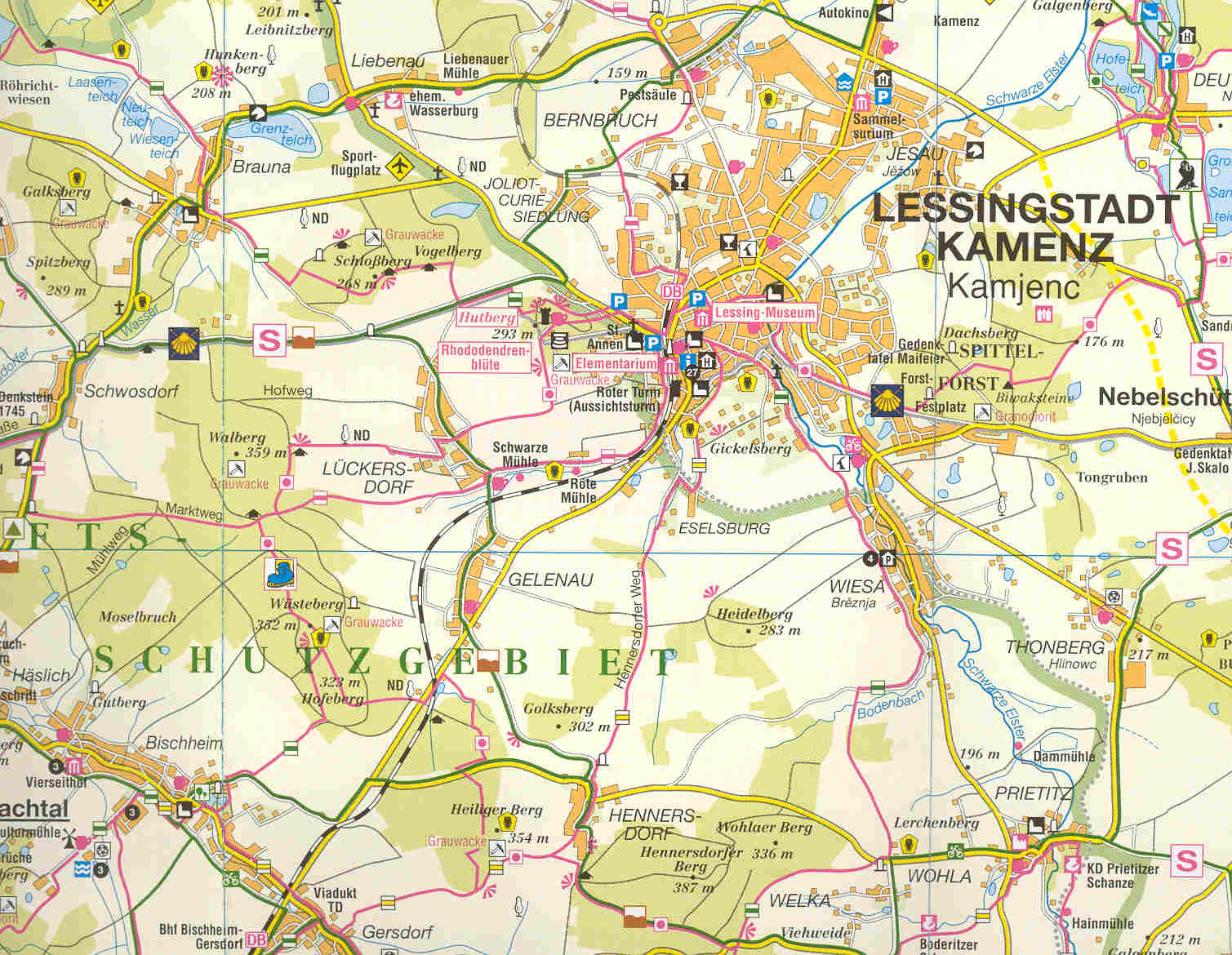
Following
is a map of modern map of Kamenz old town:
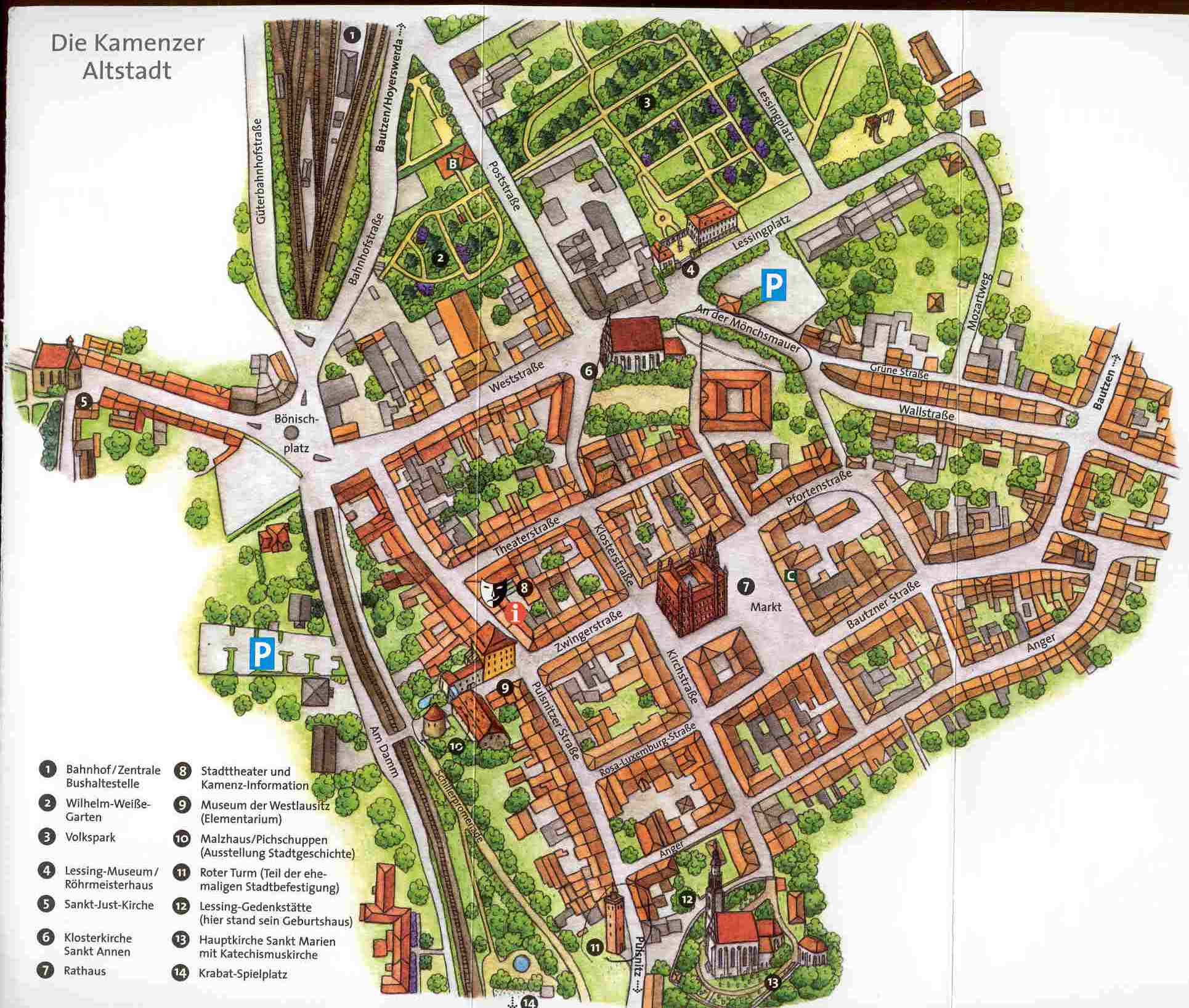
I have too many pictures to put on one web
page so I have divided them up:
Click here for pictures of St Marien
Evangelical Church (a church which is little changed since 1650).
Click here for pictures of the St. Anne's Church (with
wonderful altarpieces from before the Reformation).
Click here for pictures of the St Marien
Kirche Chapel.
Click here for pictures of the town market plaza and Rathaus (city hall).
And click here for pictures that
shows parts of the old town wall and fortifications.
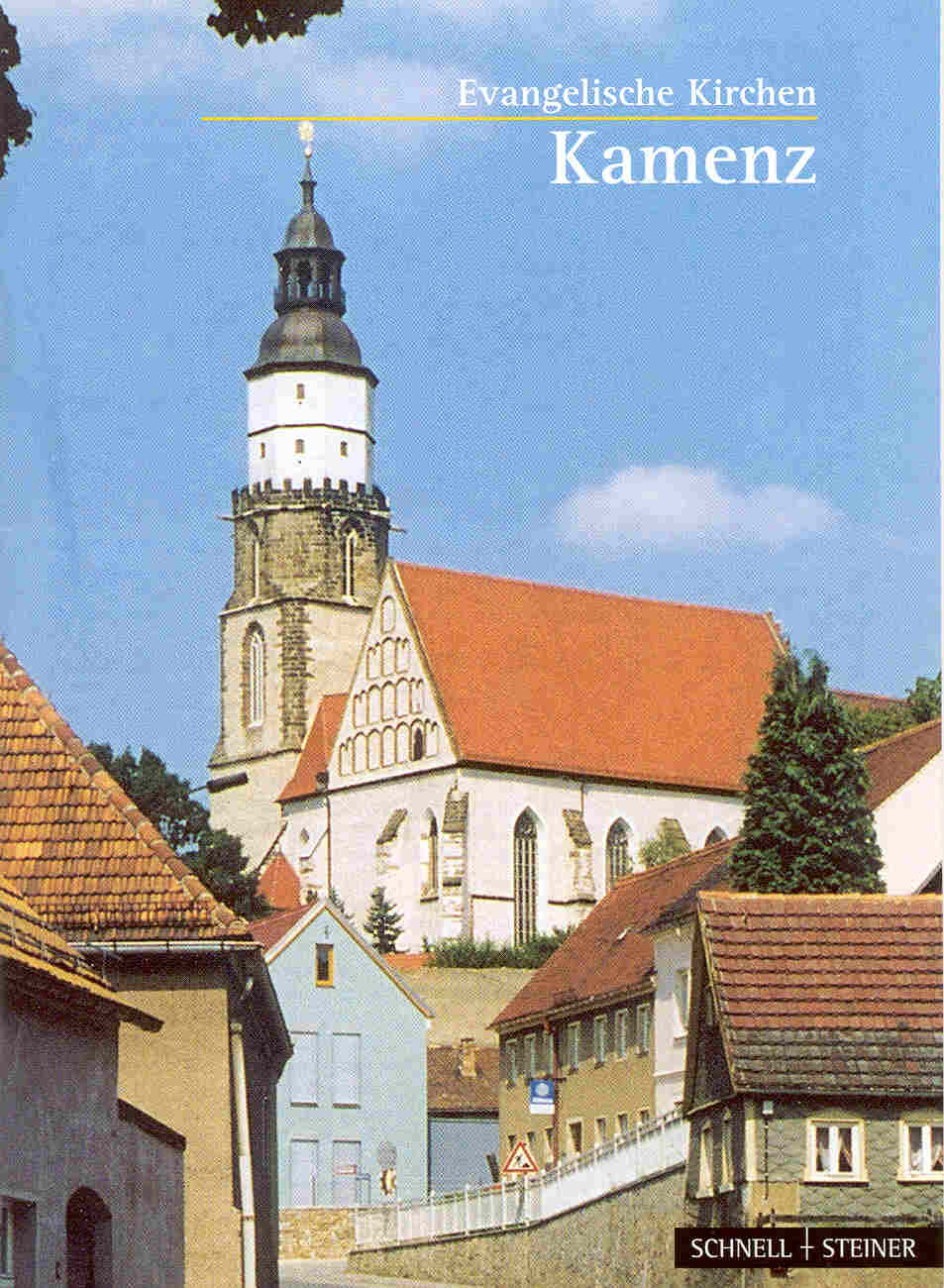
Kamenz is also the birthplace and home of the famous German
theologian, poet, and dramatist Gotthold Ephraim Lessing. He was one of 12 children of Johan Gottfried Lessing and Justina Feller; he
attended Latin school in Kamenz, the Furstenschule of St Afra in Meissen, and
later studied theology and medicine at University of Leipzig. His father Johan Gottfried was a pastor at St Marien's church pictured above and his parents graves are
wonderful stone memorials within the church. More pictures can be found by
click on the link in the above paragraph.
The Lessing home in
Kamenz is now a museum both of Lessing
history and times but also for art. Given the great impact he had on German
culture, the town also calls itself Lessingstadt (the
City of Lessing).
Lessing's father Johan Gottfried was pastor to the
Remus family who migrated to West
Prussia.
There is a lot written by him and about him.
His genealogy is in a wonderfully printed large book at the British Library in London called "Die Geschlichte der Familie Lessing" by Arend Buchholtz (call number
K.T.C.24.b.7). There should also be some Internet sources for this open
genealogy.
Please
send any queries to Bill Remus at
Remus@hawaii.edu
August
5, 2008




